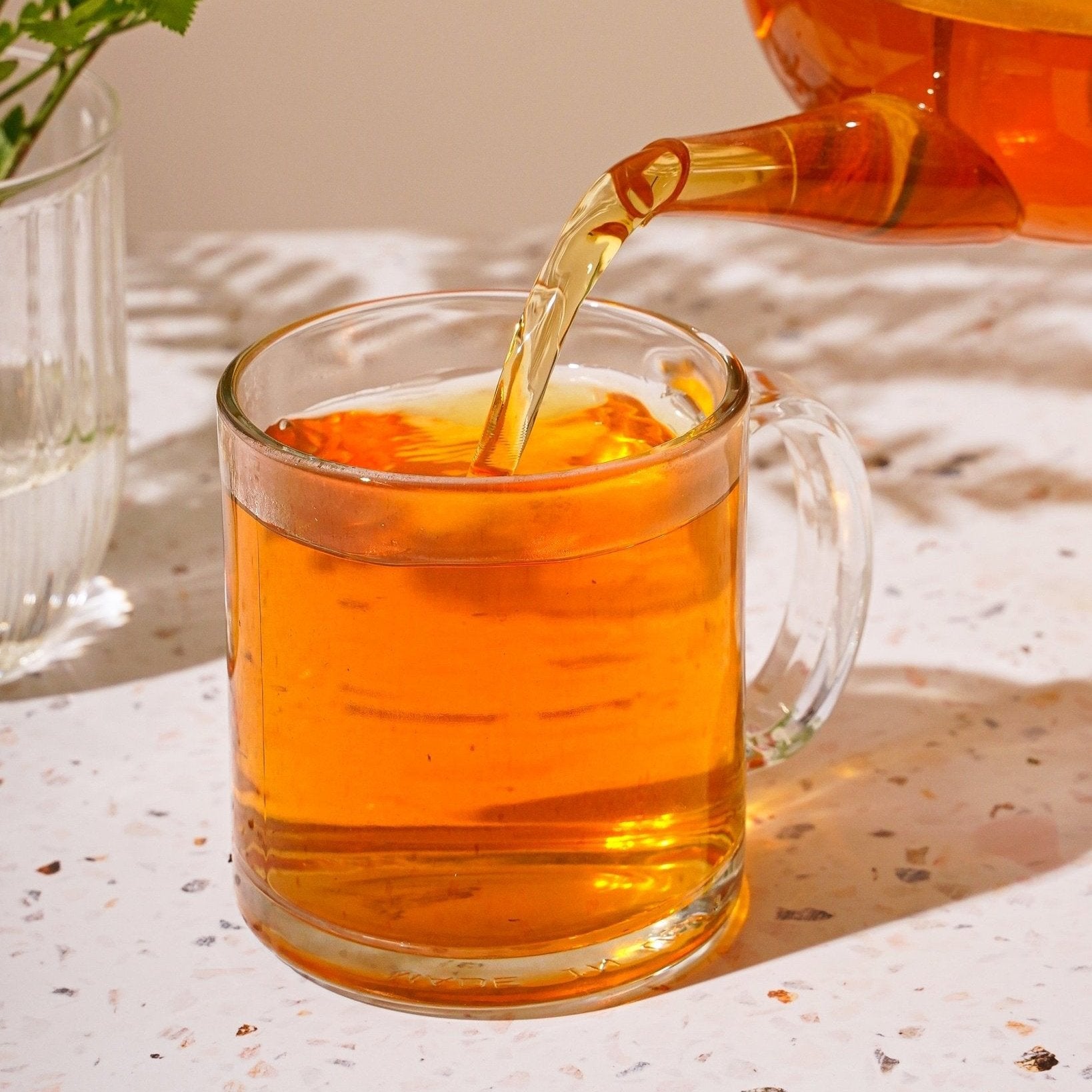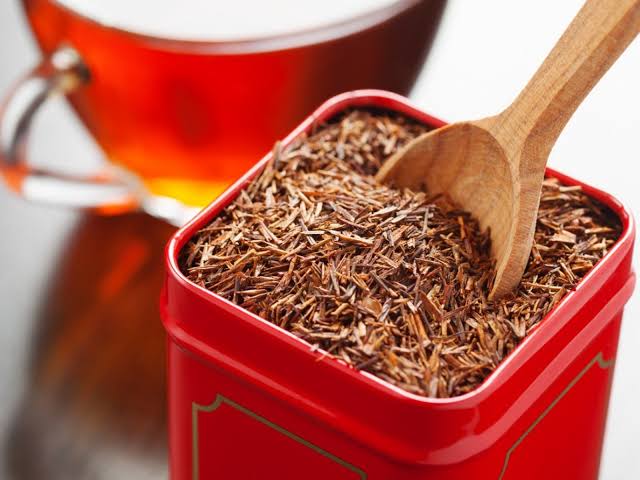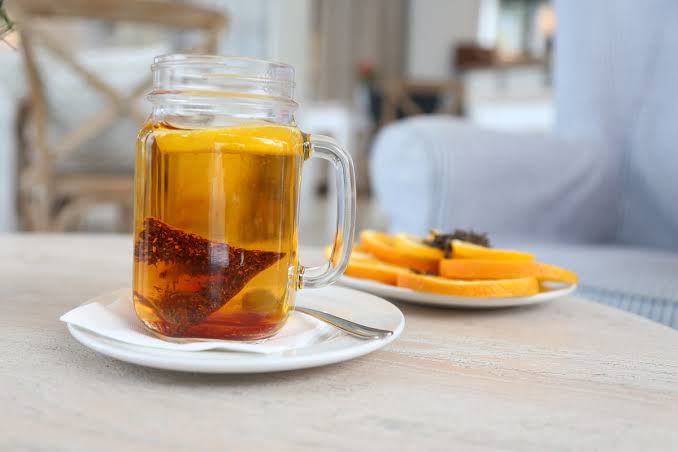Health
5 Reasons Drinking Rooibos Will Make You Look Healthy

In many South African homes, rooibos isn’t just tea—it’s part of the daily rhythm. Maybe your grandmother served it after supper, or maybe you’ve seen it listed next to matcha and almond lattes at your favourite café. Rooibos carries a quiet presence. It’s not flashy or fussy, but it shows up for you—day after day, cup after cup.
If you’re looking for a simple habit that’s good for both body and mind, here are five solid reasons to make rooibos a regular part of your routine.
1. Caffeine-Free, But Still Full of Goodness

Rooibos is naturally caffeine-free, making it a gentle choice for anyone who’s sensitive to stimulants or just wants to cut back. But it’s not lacking where it counts. It contains powerful antioxidants like aspalathin, which support the body’s ability to handle inflammation and daily stress.
In short, it helps you recover and settle—whether it’s after a long day or a restless night. And since there’s no caffeine, it’s just as welcome in the morning as it is right before bed.
2. It’s Kind to Your Digestive System
If strong teas or coffee tend to leave your stomach unsettled, rooibos is a much milder option. It’s low in tannins—the compounds responsible for the bitterness in many teas—and is often easier to digest.
Many people drink it to ease mild bloating or discomfort, and it’s been used in traditional remedies for children with sensitive tummies. It’s gentle, but it works.
3. It Supports Heart Health

Some research suggests that regular rooibos drinkers may experience improvements in blood pressure and cholesterol levels. While no single drink will fix everything, replacing just one sugary or high-caffeine beverage a day with rooibos is a step in the right direction—especially if you’re working on managing stress, salt, or sugar intake.
It’s a small, manageable switch with real potential benefits.
4. It May Benefit Your Skin
The antioxidants in rooibos don’t just support your body—they may also reflect in your skin. People who include it in their daily routine often report less redness, fewer flare-ups, and a more even tone.
It’s also used in skincare for its ability to calm inflammation, which makes it a useful option for those with eczema, dryness, or sensitive skin. Think of it as low-effort care that starts from within.
5. It Helps You Relax Without Slowing You Down

Some teas are designed to put you to sleep. Rooibos, on the other hand, simply helps you take the edge off. It has a natural calming effect, but won’t leave you feeling foggy or drained.
If evenings tend to bring stress-snacking or late-night scrolling, swapping those habits for a warm cup of rooibos might help you wind down more intentionally—without shutting you off completely.
A Quiet Staple That’s Here to Stay
Rooibos isn’t chasing trends—it’s been around for generations. It’s local, affordable, and widely available. Whether you enjoy it plain, with a splash of milk, or served chilled with lemon and honey, it’s one of the few daily choices that’s as comforting as it is beneficial.
So the next time the kettle’s on, reach for rooibos. No pressure. No gimmicks. Just a good cup—and a small way to take care of yourself.
Health
3 Snacks to Eat That Help with Sleep

Many South Africans struggle to nod off at a reasonable hour, even after switching off from work or putting down their phones. While stress, late dinners, or overthinking often take the blame, what you snack on before bed can make a real difference. These three options rely on nutrients your body already uses and are quick to prepare when you’re too tired to cook a proper meal.

Photo Credit – Google
A small bowl of oats with warm milk is a simple option many people overlook. Oats release energy slowly, helping to keep your blood sugar stable through the night. Warm milk contains tryptophan, an amino acid that helps the body produce melatonin and serotonin, hormones that regulate sleep. Keep your portion light. You’re not trying to feel full, just preventing that sudden hunger that can wake you early.

Photo Credit – Google
Another practical choice is a banana with a small handful of almonds. Bananas offer magnesium and potassium, which support muscle relaxation, while almonds bring healthy fats and a touch of protein. This combo sits comfortably in the stomach without feeling heavy, helping you avoid waking up in the middle of the night hungry.

Photo Credit – Google
If you prefer something cold and fast, Greek yoghurt with a teaspoon of honey works well. The yoghurt provides casein, a slow-digesting protein that keeps your body nourished overnight, while the honey adds just enough natural sugar to prevent a dip in blood glucose. It’s simple, quick, and fridge-ready.
None of these snacks will make you fall asleep instantly, but they help your body stay balanced before bed. They’re affordable, widely available in South African supermarkets, and easy to assemble when you’re ready to call it a night. Pair them with a calmer evening routine, such as dimming the lights, reducing screen time, and winding down earlier, and you may find it easier to fall asleep and stay asleep longer.
Health
Understanding Your Breast Cancer Risk

Many women are affected by breast cancer globally. However, its causes can differ. Understanding the risk factors helps protect your health. Here are some risk factors linked to breast cancer and how to reduce them.
Age and Family History

Young african afro woman holding cancer ribbon standing over isolated pink background very happy pointing with hand and finger to the side : IStock
The older a woman gets, the higher her risk of developing breast cancer. Women over 50 face an increased risk of having breast cancer. Aside from age, your family history also influences your risk. If anyone in your family has a history of cancer, consider screening.
Lifestyle Choices
Your lifestyle is another factor. Bad lifestyle choices like alcohol consumption, high sugar intake, and not getting enough exercise are dangerous. Try to watch your weight, as obese people are at higher risk. Smokers are also at risk of developing the disease.
Read Also : Perimenopause: What No One Tells You
Hormones and Reproductive Factors

African american senior woman pointing at breast cancer awareness ribbon on pink t-shirt. identity and breast cancer awareness concept: istock
Hormonal factors influence risk too. Women who experience early or late menopause should monitor their health. Too much oestrogen can slightly raise the risk. If you use hormone replacement therapy frequently, your risk may increase.
Breast Density
Women with dense breast tissue are also at risk. Dense tissue can slightly increase the risk and make it hard to detect cancer. When this happens, doctors may advise undergoing additional imaging tests.
How to Reduce Risk

Smiling young woman making heart shape with hands showing pink ribbon for breast cancer awareness : Istock
Factors like age and family history can’t be avoided. If you are above 50 or have a family with history of the condition, watch what you eat. Also, eat fruits and include vegetables in most of your foods. Meanwhile, don’t forget to work out regularly. You could also enrol in a gym or just design a way to keep fit around your house.
Why Early Detection is Important
Women are advised to undergo regular screening to detect early signs of breast cancer. Early detection is best as it promotes quick treatment . Women over 50 are advised to have a mammogram every one to two years. Those with higher risks may need to start earlier.
These risk factors are not exclusive and don’t mean you will get breast cancer. There are women who develop it without these risks detection. Regular check-ups and early detection make it easier to treat. Contact your doctor to know your risk and discuss preventive options. Knowing your breast cancer risk gives you the chance to make healthy choices.
Health
Natural Ways to Manage Endometriosis Symptoms

Managing endometriosis naturally is possible with the right lifestyle choices. While there are recognised clinical treatments. However, these natural approaches shouldn’t replace medical treatments. Below are some natural ways to manage this condition.
Take Anti-Inflammatory Foods
 Endometriosis comes with much pain, but with the right diet, you can find relief. Eat plenty of vegetables, fruits, and fibre-rich food. Also, foods rich in Omega-3s like shrimp and salmon are ideal choices. You should cut down on sugar and processed foods as they can worsen your condition.
Endometriosis comes with much pain, but with the right diet, you can find relief. Eat plenty of vegetables, fruits, and fibre-rich food. Also, foods rich in Omega-3s like shrimp and salmon are ideal choices. You should cut down on sugar and processed foods as they can worsen your condition.
Daily Exercise
Another natural way to manage endometriosis is regular exercise. Jogging, cycling, and walking are gentle aerobic options. You can try yoga and meditation to keep your mind relaxed. If this can’t be done daily, three times a week is enough for good results.
Heat Therapy

If you have aches or muscle pain, consider heat therapy. This includes taking a warm bath or placing a hot water bottle on your abdomen. This is a simple way to relieve discomfort. There are effective heat therapy tools available to help manage the pain.
Read Also : Should You Work Out in Cold Weather
Stress Management Strategies
Stress is another factor that could make your condition worse. People with these symptoms are advised to relax more. Try out various meditation techniques to keep your mind calm. Also, spending time with loved ones, and taking some time off work can bring down your stress levels.
Watch Your Weight

If you are overweight or battling with obesity you might have to shed some weight. Excess body fat can make the symptoms harder to manage. So you need to keep an eye on your weight and hormonal balance. Engage in regular physical activity. and avoid alcohol and caffeine to keep your weight in check.
Herbal Supplements
These can also provide some form of relief to those with endometriosis. Consider supplements rich in ginger, green tea, and turmeric. They have potent anti-inflammatory properties. which makes them a good option. However, speak to a qualified medical practitioner before using them.
Final Thoughts
To manage endometriosis, you need to be patient. There are no quick ways to get rid of this condition. You will need to make some lifestyle and diet changes to see meaningful results. The natural ways suggested above can help improve your overall well-being when used alongside medical advice.
-

 Fashion5 years ago
Fashion5 years agoIncredidibly sexy; Willow Smith, 20, wore lingerie for the first time!
-

 Beauty4 years ago
Beauty4 years agoWillow Smith: The New Face For Mugler’s Alien Goddess Fragrance!
-

 Celebrity News4 years ago
Celebrity News4 years agoRihanna and A$AP Rocky, so cozy while filming new music video at new york!
-

 Celebrity News6 years ago
Celebrity News6 years agoAmber Rose and Her New Face Tattoo!
-

 TV4 years ago
TV4 years agoMadonna’s ‘Madame X’ Documentary announced for October 2021 with Paramount
-

 Fashion4 years ago
Fashion4 years agoKylie Jenner’s Business Outfit!
-

 Fashion5 years ago
Fashion5 years agoParis Hilton, The New Face of Lanvin Spring-Summer 2021
-

 Celebrity News4 years ago
Celebrity News4 years agoNormani “Wild Side” feat Cardi B





















